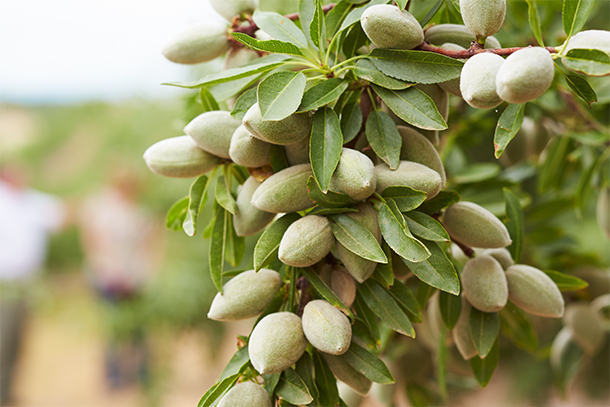The last thing any almond grower wants to do is spend money on something that’s not needed to produce an optimal crop. Especially in tight years, growers try to maximize the investment of their inputs.
In particular, fertilizer prices have spiked this year thanks to continued snags in the global supply chain and related transportation issues as well as the Russia/Ukraine war – Russia is one of the world’s largest producers of nitrogen and potassium.
One proven way growers can avoid applying too much fertilizer is by accurately estimating the yield expected from their trees. Even in established orchards, yields can vary from year to year based on a variety of factors – the age of the trees, weather and soil conditions all can affect yields.
For instance, several almond-producing areas in Californian experienced frost during bloom this year, which can be expected to reduce yields in some orchards. Applying the same amount of fertilizer in those orchards as the previous year – when the same trees produced a larger crop – isn’t likely to change that and could be a waste of money.
“Fertilizer prices are really, really expensive these days, which is why it's really important to apply the right amount at the right time,” said Sebastian Saa, associate director of agricultural research for the Almond Board of California.
In addition to his duties with the Almond Board, Saa also is part of the California Department of Food and Agriculture’s Fertilizer Research and Education Program. One of his responsibilities there is to review proposals related to the precision application of fertilizer. Accurate yield estimates are a critical part of any grower’s data set when deciding when and how much to fertilize.
“It's really important to have a good estimation – hopefully as early as possible in the season – of how many kernels you are going to have on those trees and how many pounds you expect to produce because that is the driver to define how many pounds of nitrogen you need to apply,” Saa said.
Historical reference
Keeping good records of an orchard’s yield year over year under varying weather conditions and with fluctuations in water availability can pay off when it’s time to formulate annual estimates each spring.
“You don’t have to do it perfectly,” Saa said. “You could be off for 500 pounds in your first assessment early in the season and that’s fine because as the season progresses, you can do it again and again and adjust your fertilization plan accordingly. So, the earlier you try and the more you do it, the better you get at it and the better you get at applying the right amount of nitrogen.”
There is no “one-size-fits-all” approach to nitrogen needs. Each orchard should have a specific nitrogen management plan that considers the 4 Rs of Nutrient Management:
-
Right rate
-
Right time
-
Right place
-
Right source
Growers cannot enhance orchard productivity by providing more nitrogen than is needed by the crop. However, they can harm productivity by applying too much nitrogen. With proper management, optimal productivity and minimized nitrogen loss can be achieved simultaneously.
Saa said that in years like this one – with fertilizer prices higher than in the past and potential yield reductions from frost events – it’s more important than ever that growers’ yield estimates are accurate. He recommends doing leaf analyses “to see if your trees are actually responding to what you're applying.”
“I think the worst thing you can do is to do blind applications,” he said. “There are multiple reasons this year to not do that.”
Growers who need more assistance with their fertility program can refer to the Nitrogen Best Management Practices and Quick Guide.

